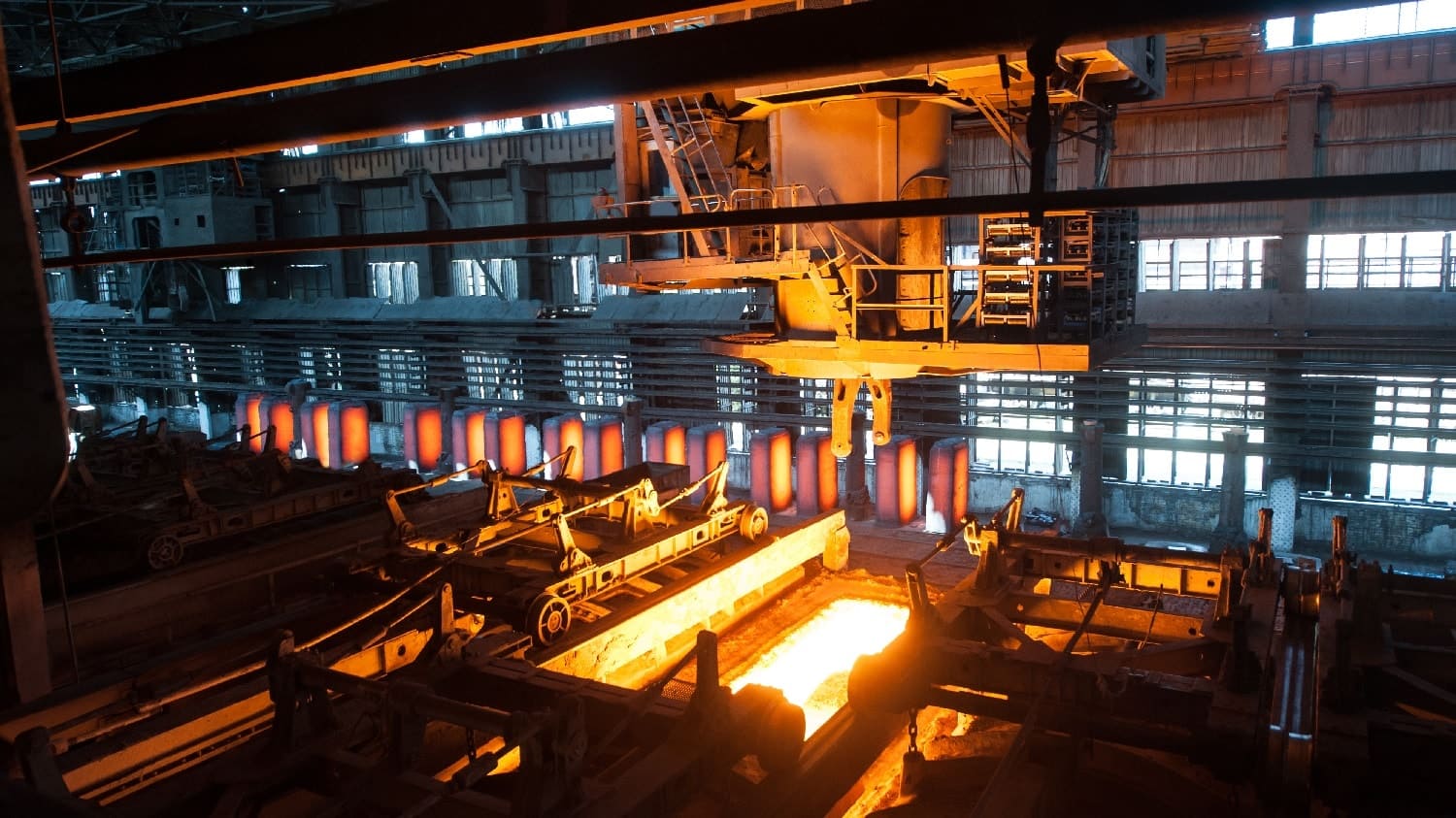Like any other stage of steel production, the rolling process includes different methods to produce rolled steel.
Globally, rolled steel can be hot rolled and cold rolled. Hot-rolled steel is thought to account for up to 80% of global commercial production of rolled steel. We will talk about it.
Metallurgy starts from raw materials such as iron ore and coke. When it comes to conventional technology, they are used to produce iron at blast furnaces (BF). The iron is then used to make steel and semi-finished steel products such as slabs, blooms, round or square billets, and beam blanks. In some cases, this production excludes a BF process. For this purpose, electric arc furnaces (EAF) are used, where ferrous scrap and direct reduction iron (DRI) are used as feedstock.
Although many global producers sell slabs and square billets, these products cannot be used directly to manufacture cars, machinery, goods or steel structures. Semi-finished products should be further processed at rolling mills, where rolled steel of the target shape, geometry, and physical and mechanical properties is produced.
All semi-finished steel products undergo hot rolling first. It is carried out at hot-rolling mills where a semi-finished product is subject to plastic deformation by passing between two rolls, as a result of which its initial shape changes. That said, the material temperature shall be above the steel recrystallisation temperature.
Roughly speaking, it should be rather soft to be deformed by rolls, like the dough under a rolling pin. Furthermore, the metal is very hot – in most cases its temperature at the beginning of rolling is above 1,100°С and its finishing temperature is at least 900°С. This is why such rolled steel is called hot-rolled.
- As a matter of fact, hot rolling is used to produce flat- and long-rolled steel:
- Plates or heavy plates from 4 to 350 mm in thickness
- Sheets from 1.2 to 4 mm in thickness
- Coils up to 25 mm in thickness
- Sections of simple shape – round, square, rebar, flat bar, and wire rod
- Structural shapes – rails, angles, H-beams, channels, special profiles, etc.

Hot-rolled steel is mainly produced at rolling mills consisting of stands. For example, hot-strip mills can consist of up to 15 "quarto" stands (i.e., each stand is complete with two pairs of rolls) and edgers to form the strip edges.
Hot-rolled plate production using slabs includes the following steps:
- Feeding slabs into reheating furnaces
- Reheating
- Feeding to the mill stands and rolling in several passes
- Levelling at a leveller
- Cooling at cooling beds
- In-line, non-destructive testing
- Trimming the longitudinal edge and ends, and cutting to length
- Finishing, check testing, acceptance, and marking
What are the advantages of hot rolling? If we wanted to process a cold steel slab into a flat product, we would hardly be able to succeed at it – such a slab is very hard, strong and thick even for specialised rolling equipment. Therefore, semi-finished products should be reheated first. Hot steel becomes plastic and easier to process. As a result, rolling mills help save time and efforts for the production of steel plates and strips.
In the CIS, finished hot-rolled plates are classified by:
- Accuracy (А – increased accuracy, B (Б) – normal accuracy);
- Flatness (PO (ПО) – extremely high, PV (ПВ) – high, PU (ПУ) – improved, PN (ПН) – normal flatness);
- Edge type (NO (НО) – mill edge, О – trimmed edge), etc.
The main advantage of hot-rolled steel is that it costs less than cold-rolled steel. Therefore, it is widely used in applications where less attention is paid to the surface quality and super high-dimensional accuracy, e.g., to make support steel structures for large construction projects or in the engineering industry. Metinvest Group is a large producer of hot-rolled steel. The Group's enterprises in Ukraine and Europe are complete with rolling equipment that is capable of producing the widest range of hot-rolled flat products. For example, the 3600 plate mill at Azovstal Iron and Steel Works andthe 3000 plate mill at Ilyich Iron and Steel Works of Mariupol. The mills in Italy and the UK produce plates for construction, shipbuilding, and pipemaking, while 1700 HSM at Ilyich Iron and Steel Works of Mariupol, 1680 mill at Zaporizhstal, and Steckel mill at Ferriera Valsider (Italy) produce steel coils. It should be noted that Metinvest Group invested US$110 million in the modernisation of the 1700 HSM at Ilyich Steel between 2018 and 2019.
To date, the typical hot-rolled flats production cycle involves reheating and rolling slabs. Strip-casting plants are becoming more commonly used by global steelmakers. In fact, this equipment combines steel casting and hot rolling into one production flow, omitting a semi-finished production stage. Such a technology makes it possible to achieve savings on utilities and to speed up the production process.
Although this technology is relatively young, Metinvest Group has been exploring the possibility of implementing it at one of its steel plants.
